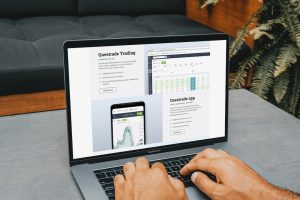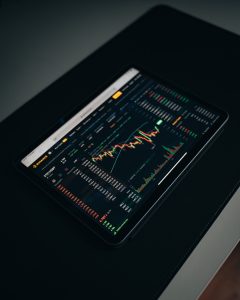Forex trading is a complex market, and traders need to be aware of the various indicators that can help them make informed decisions. These indicators can provide valuable information about the market’s movements and help traders predict future price trends. In this article, we will explain some of the strongest indicators used in forex trading.
1. Moving Averages
Moving averages are one of the most commonly used indicators in forex trading. They are used to identify trends and potential trend reversals. A moving average is calculated by taking the average price of a currency over a specific period of time, such as 10 days, 50 days, or 200 days. Traders often use a combination of moving averages, such as the 50-day and 200-day moving averages, to get a better understanding of the market’s direction.
2. Relative Strength Index (RSI)
The Relative Strength Index (RSI) is another popular indicator used in forex trading. It is a momentum oscillator that measures the speed and change of price movements. The RSI is calculated by comparing the average gains and losses of a currency over a specific period of time, such as 14 days. The RSI ranges from 0 to 100, with readings above 70 indicating overbought conditions and readings below 30 indicating oversold conditions.
3. Bollinger Bands
Bollinger Bands are a technical analysis tool that is used to measure volatility in the forex market. They are made up of three lines: the middle line is a simple moving average, and the upper and lower bands are two standard deviations away from the middle line. Bollinger Bands can help traders identify potential breakouts and reversals, as well as determine whether a currency is overbought or oversold.
4. Fibonacci Retracement
Fibonacci retracement is a technical analysis tool that is used to identify potential levels of support and resistance. It is based on the Fibonacci sequence, a mathematical pattern that appears throughout nature. Traders use Fibonacci retracement to identify key levels where a currency may bounce back from a pullback or break through a resistance level.
5. Ichimoku Cloud
The Ichimoku Cloud, also known as Ichimoku Kinko Hyo, is a technical analysis tool that is used to identify support and resistance levels, as well as potential trend reversals. It consists of five lines that are calculated based on the average price over a specific period of time. The Ichimoku Cloud can help traders identify key levels where a currency may bounce back from a pullback or break through a resistance level.
6. MACD
The Moving Average Convergence Divergence (MACD) is a momentum indicator that is used to identify potential trend reversals. It consists of two lines: the MACD line, which is the difference between two exponential moving averages, and the signal line, which is a nine-day exponential moving average of the MACD line. The MACD can help traders identify potential buy and sell signals, as well as determine the strength of a trend.
In conclusion, forex traders need to be aware of the various indicators available to them to make informed decisions. These indicators can provide valuable information about the market’s movements and help traders predict future price trends. Moving averages, relative strength index, Bollinger Bands, Fibonacci retracement, Ichimoku Cloud, and MACD are some of the strongest indicators used in forex trading. Traders should use a combination of these indicators to get a better understanding of the market’s direction and make informed trading decisions.






